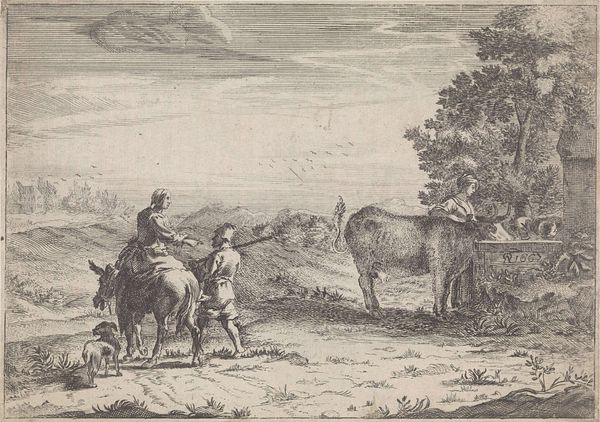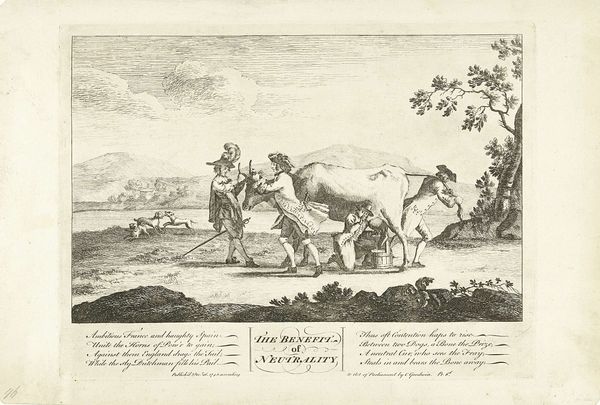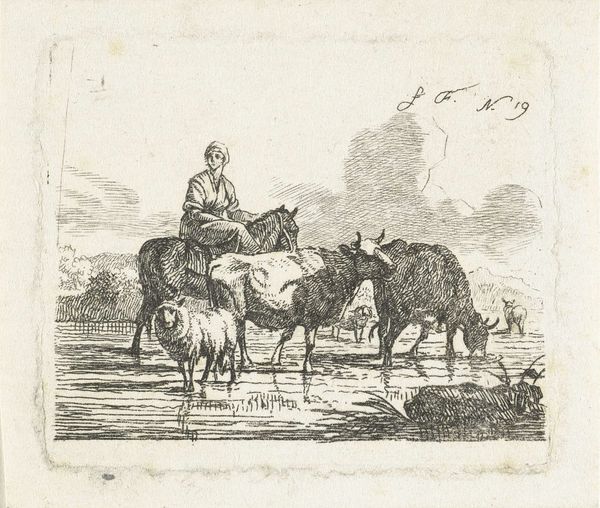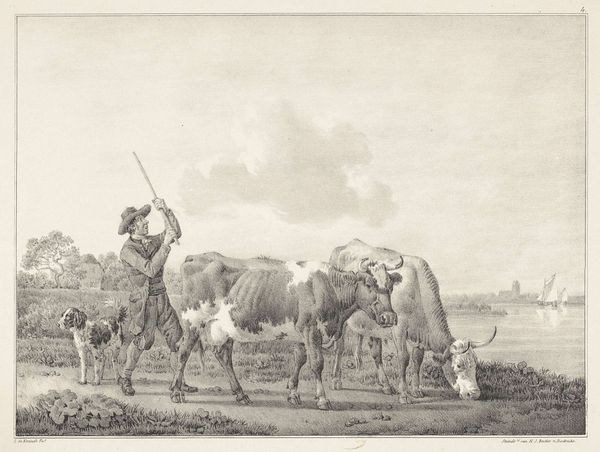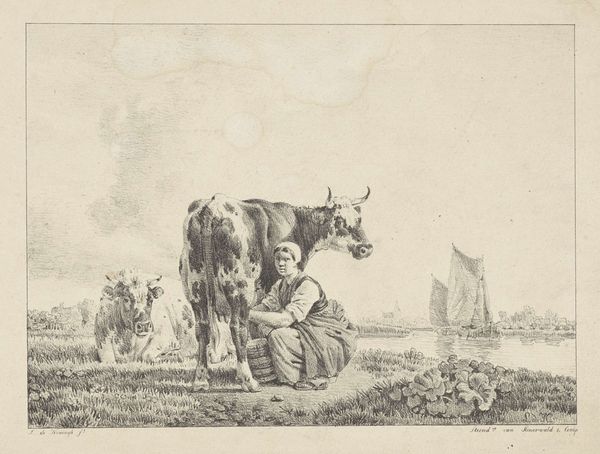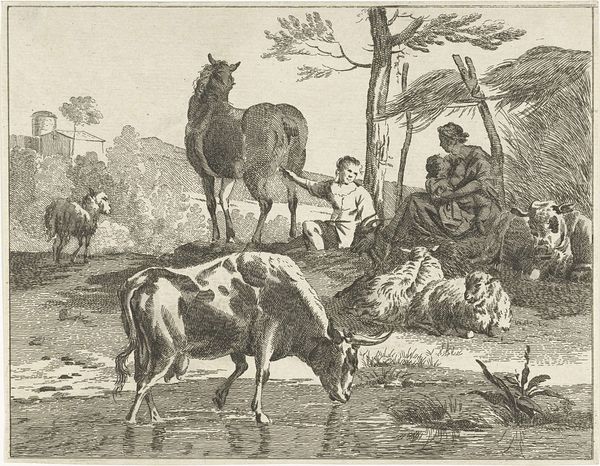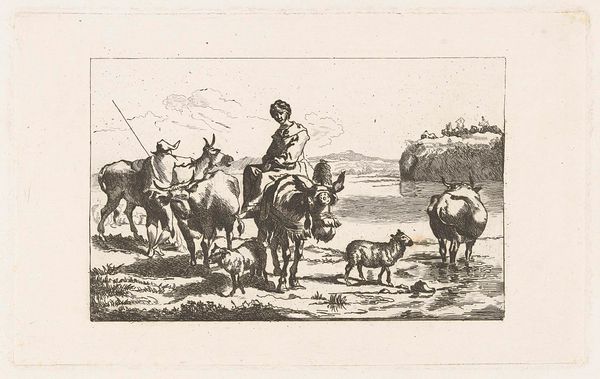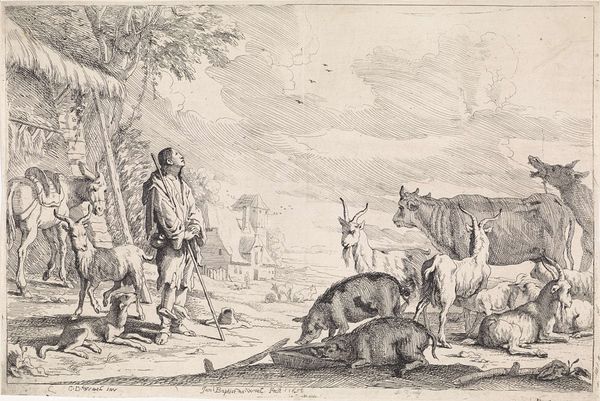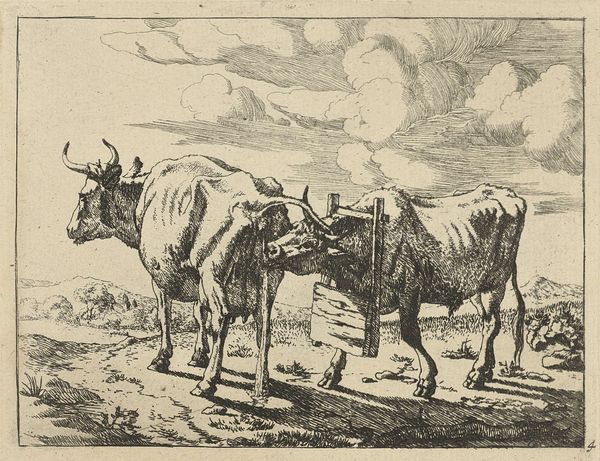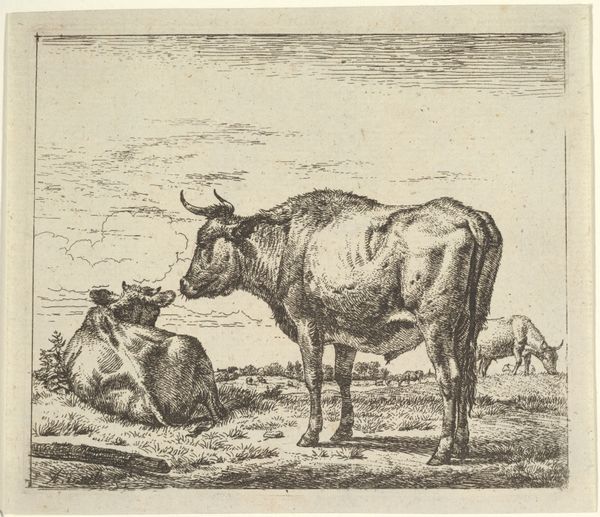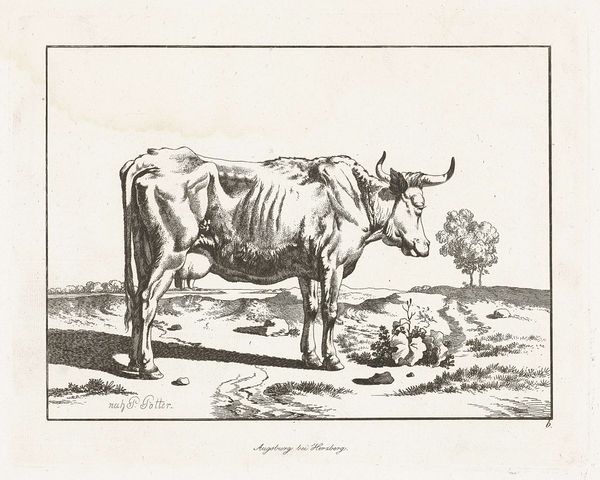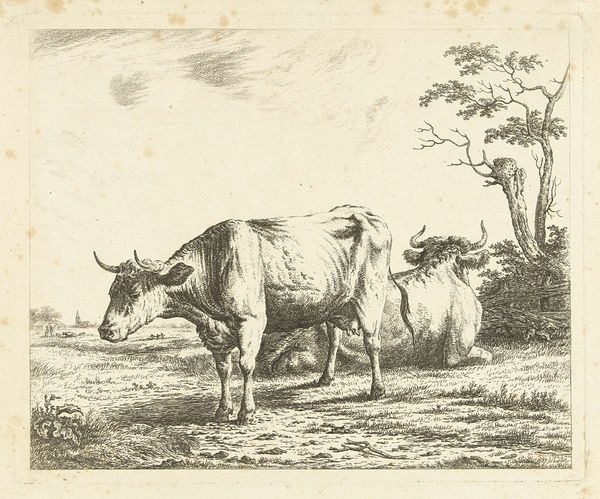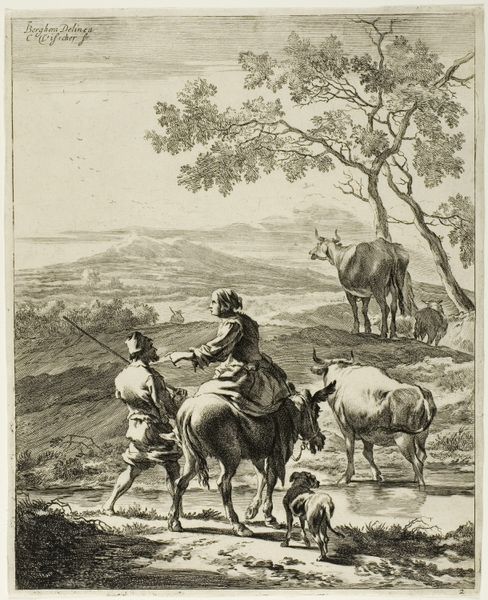
print, etching
# print
#
etching
#
landscape
#
romanticism
#
genre-painting
#
realism
Dimensions: height 89 mm, width 110 mm
Copyright: Rijks Museum: Open Domain
Editor: This is "Boer met drie koeien," or "Farmer with Three Cows," an etching by Frédéric Thédore Faber, dating back to somewhere between 1808 and 1810. The way the artist captured the textures through line work is so striking. What jumps out at you when you look at this print? Curator: Immediately, I note the interesting interplay between line weight and density. Consider the foreground: Faber uses a concentration of short, choppy lines to describe the weeds and debris. How does that visual texture compare to that used in rendering the distant sky? Editor: The sky seems much more open and less defined, achieved by the lighter, longer lines, right? So, what effect does this have? Curator: Precisely. The contrast guides the eye. But consider also how the artist structures the forms of the cows themselves. The shading delineates the roundness of their bodies, setting them apart from the flatter background. Notice how Faber manipulates perspective through this variance of definition. What do you make of it? Editor: That contrast definitely pushes the cows and the farmer forward, almost like they're emerging from the background. And the composition leads you to really focus on them rather than the wider scene. Curator: Indeed. One might consider how Faber uses a visual grammar to signify depth and volume within the constraints of the etching medium. The linear perspective combined with the contrasts are key to creating an effective picture. Editor: This close looking really changed my view on the piece! The strategic use of line work seems to create layers of depth and texture that give life to a seemingly simple pastoral scene. Curator: Yes, noticing how such intrinsic features are carefully deployed gives us much insight.
Comments
No comments
Be the first to comment and join the conversation on the ultimate creative platform.
